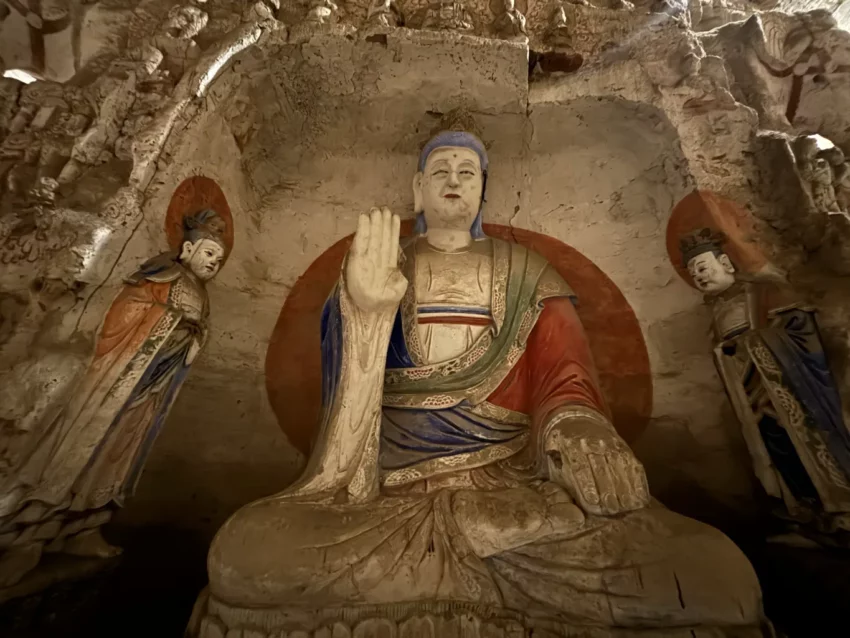Wangmu Palace Grottoes: A Hidden Gem of Ancient Buddhist Art in Gansu
The Wangmu Palace Grottoes, also known as Wangmuugong Grottoes or Xiwangmu Grotto, are nestled in the western suburbs of Jingchuan County, Gansu Province. Located at the foot of Gongshan Mountain, where the Lihe and Jinghe rivers meet, these grottoes hold a special place in China’s rich tapestry of Buddhist history. Locals often refer to them as the Big Buddha Cave or Thousand Buddha Cave.
Get your dose of History via Email
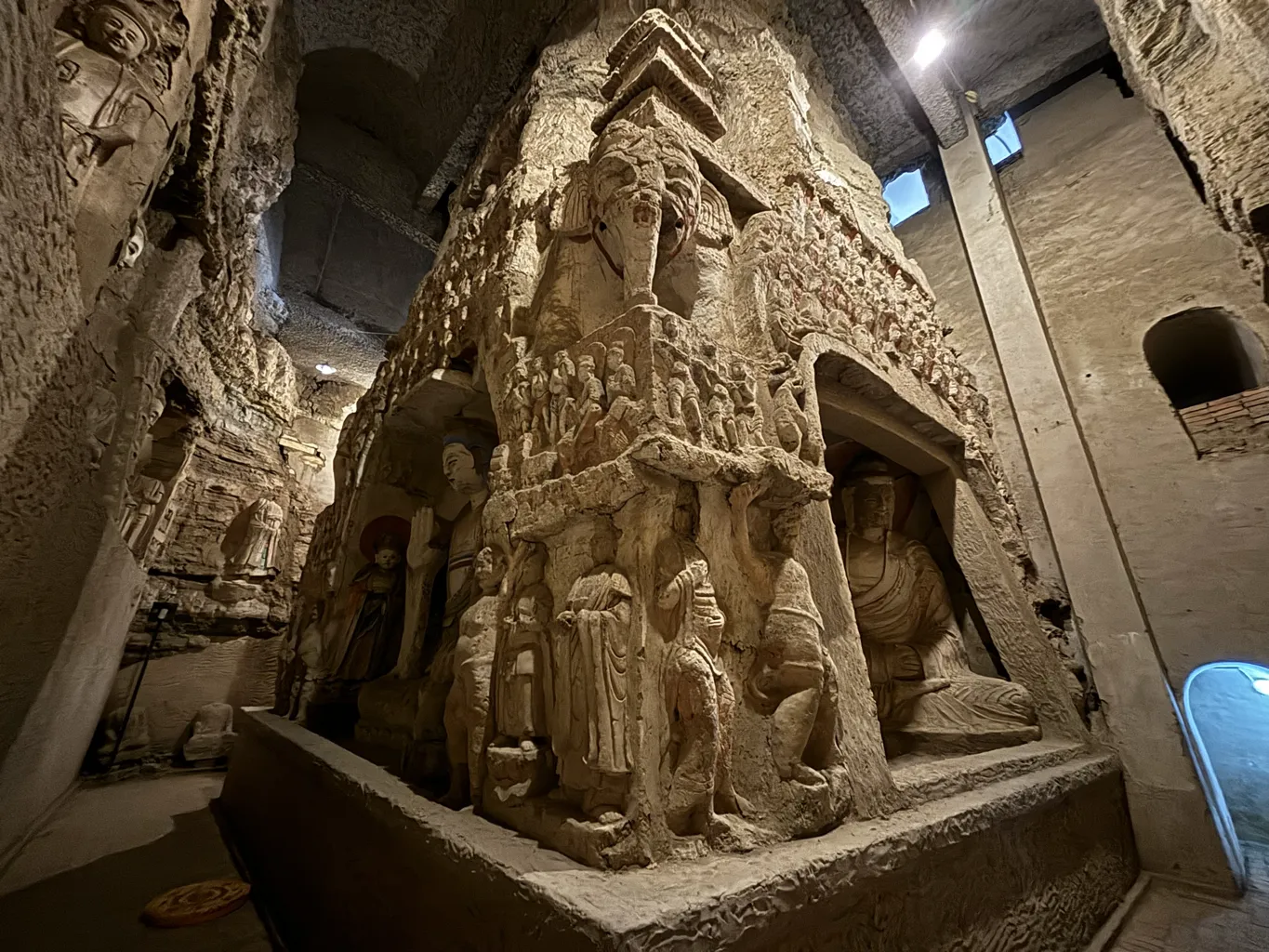
An Ancient Wonder of Buddhist Art
The exact date of the grottoes’ creation remains unclear. However, experts believe that the Wangmu Palace Grottoes were carved earlier than the Seven Buddha Caves of the South and North Grottoes Temples, which date back to the Yongping period of the Northern Wei Dynasty. The statues within the grottoes feature “wide clothes and wide belts,” a style that suggests an even earlier origin.
In 2006, the Chinese government designated Wangmu Palace Grottoes as a national key cultural relic protection unit, recognizing its historical significance.
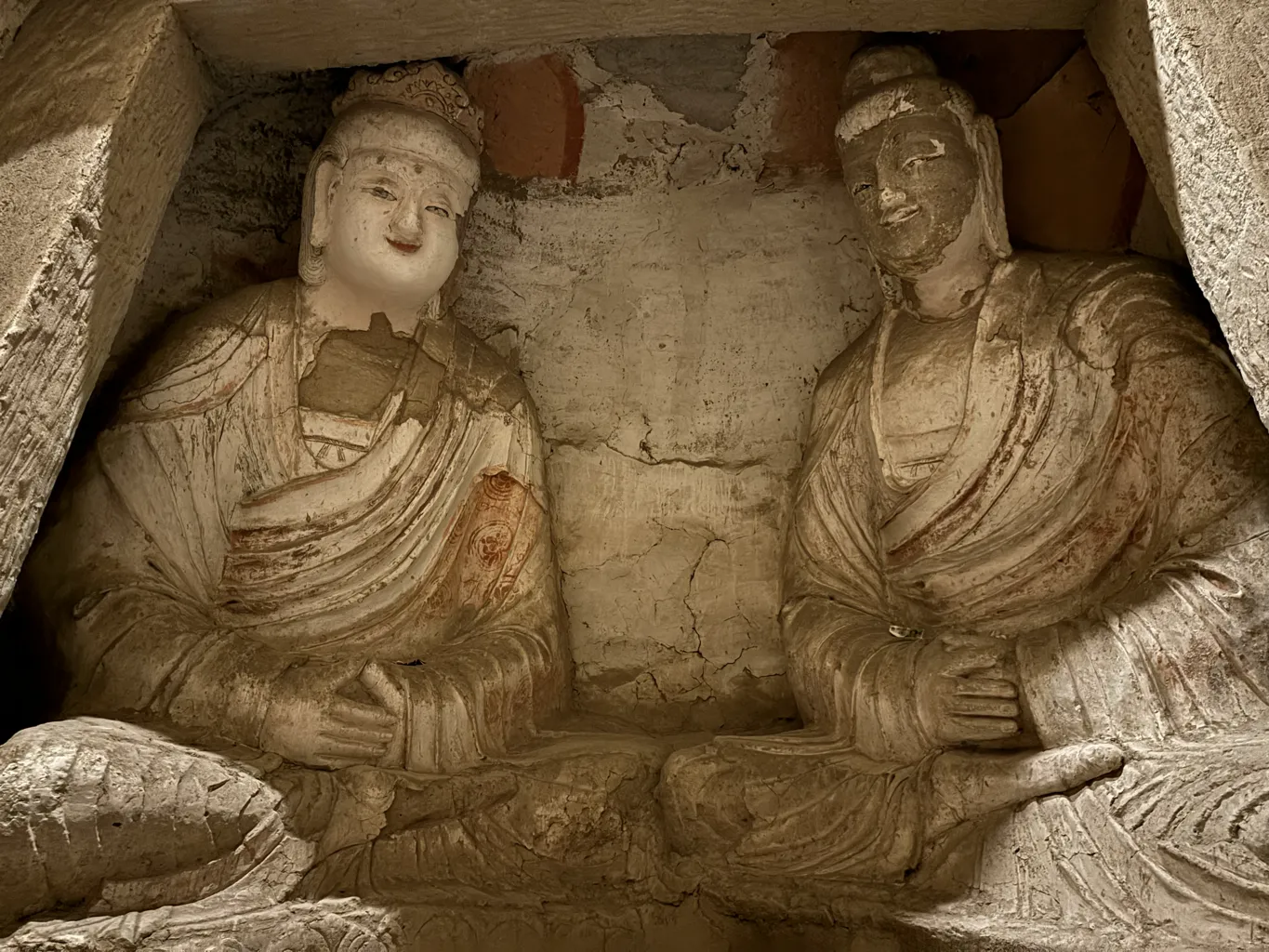
The Wangmuugong Grottoes’ Architectural Splendor
The Wangmu Palace Grottoes are built directly into the mountainside, with three floors of towering pavilions. The grottoes are slightly rectangular, standing 11 meters high, 12.6 meters wide, and 13 meters deep. A central column, 7 meters wide and 7.6 meters deep, dominates the interior. The grotto’s corridor, shaped like the Chinese character “回,” adds a unique architectural touch.
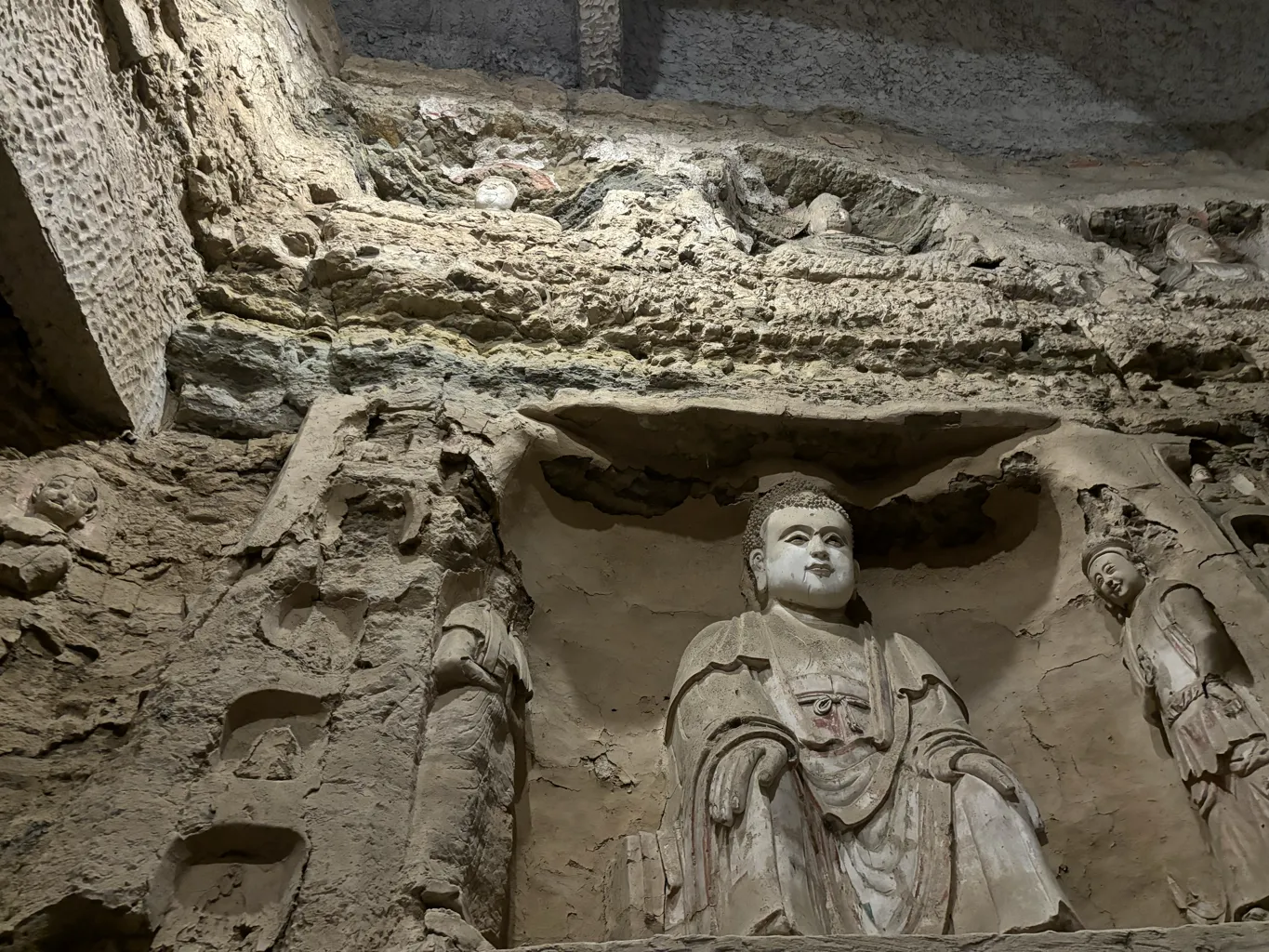
Inside, more than 200 statues adorn the three layers of the cave. These statues, carved on the central column and three surrounding walls, showcase the rich artistic heritage of the Northern Wei Dynasty. The central column also features intricate carvings of white elephants carrying pagodas, a common motif in Buddhist art that symbolizes the Buddha’s Dharma body.
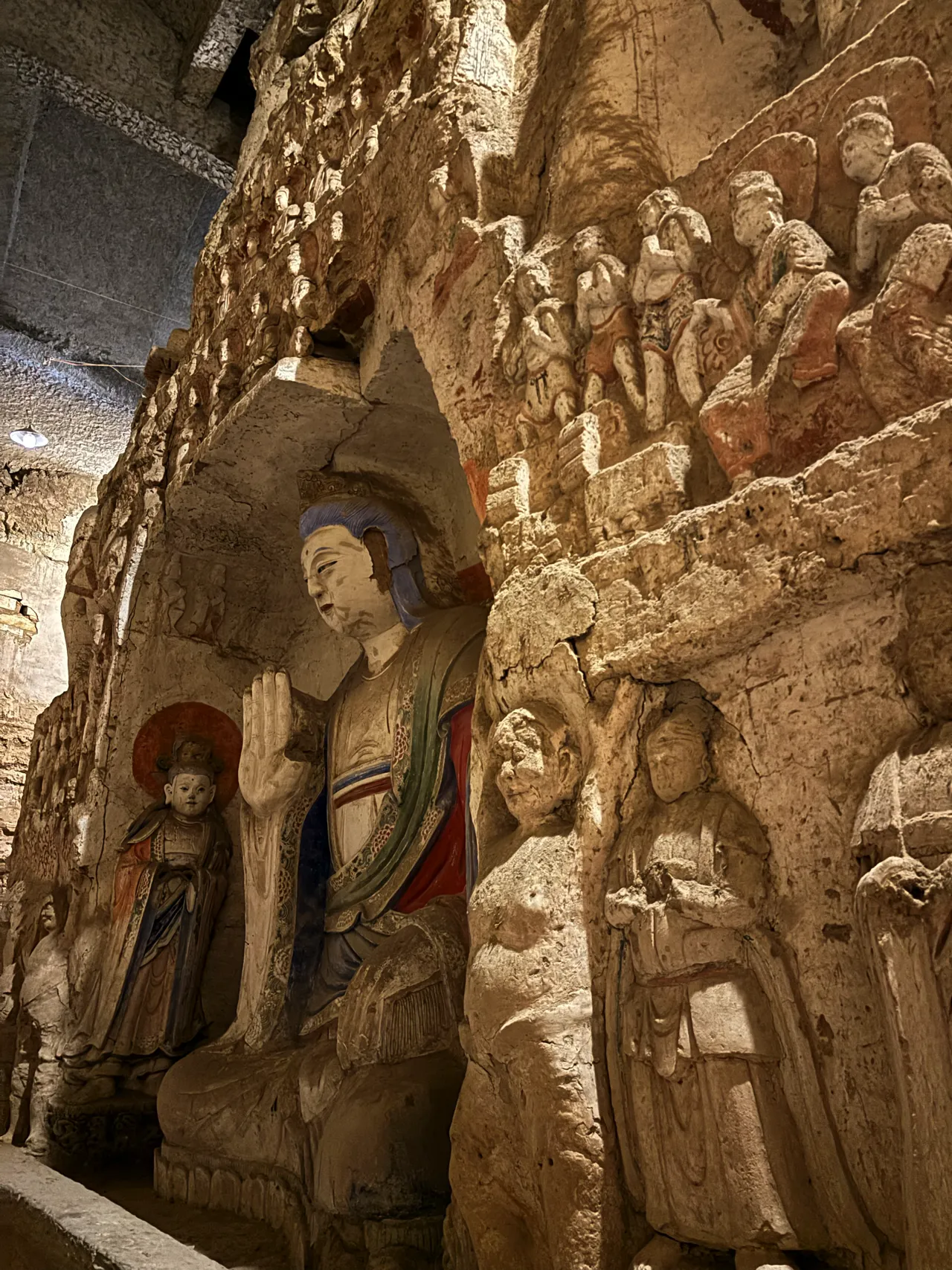
Historical Connections to Yungang Grottoes
The Wangmu Palace Grottoes bear a striking resemblance to the famous Yungang Grottoes in Datong, over a thousand kilometers away. This connection likely dates back to the Northern Wei Dynasty when devout Buddhist rulers commissioned large-scale grottoes. The construction of the Yungang Grottoes began in 453 AD and involved 50,000 craftsmen.
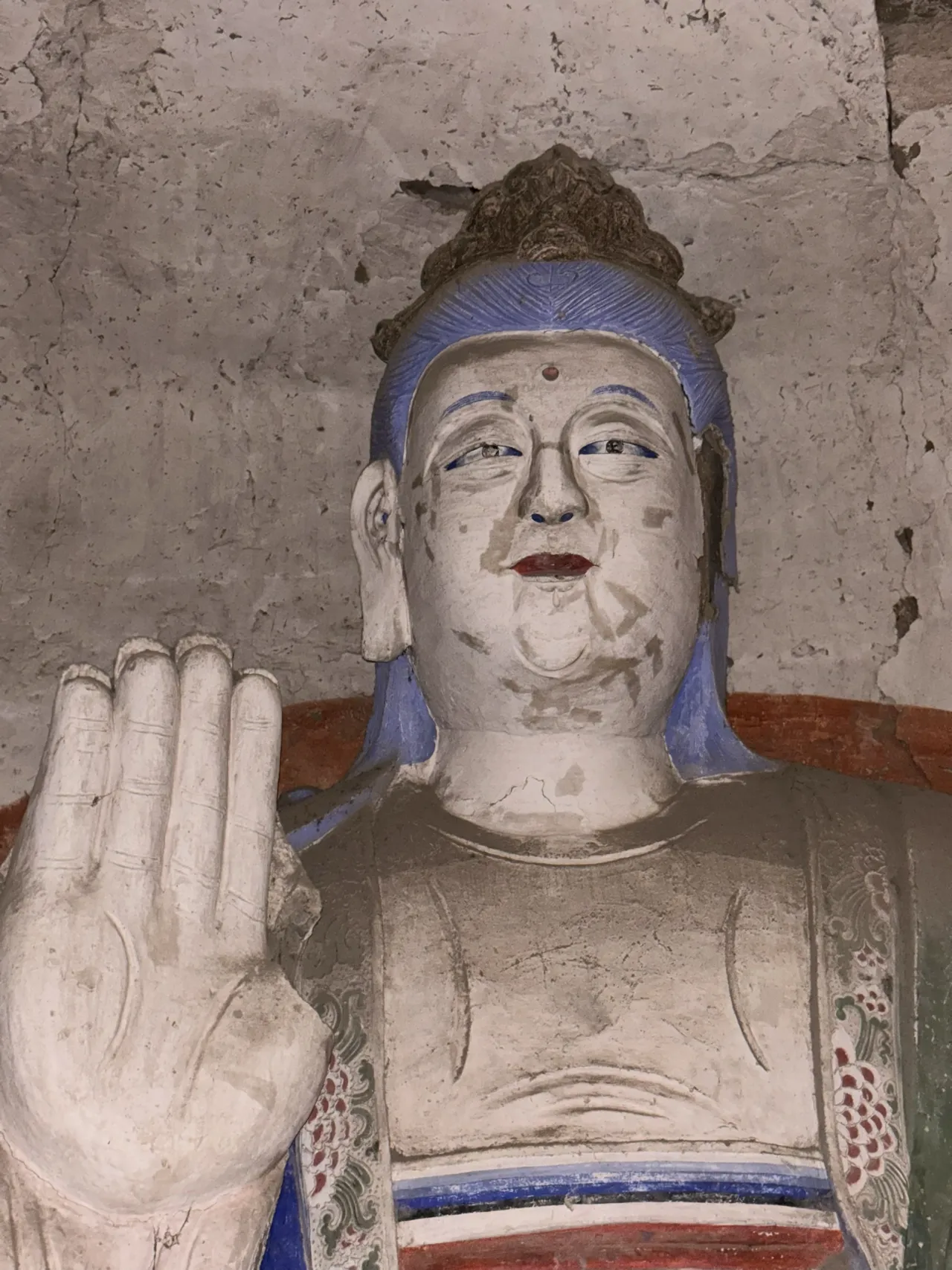
Scholars believe that some of these skilled artisans later traveled to Jingchuan to create the Wangmu Palace Grottoes. The two Bodhisattvas carved in the Wangmu Palace Grottoes display typical features of Yungang Grottoes’ sculpture art, further supporting this theory.
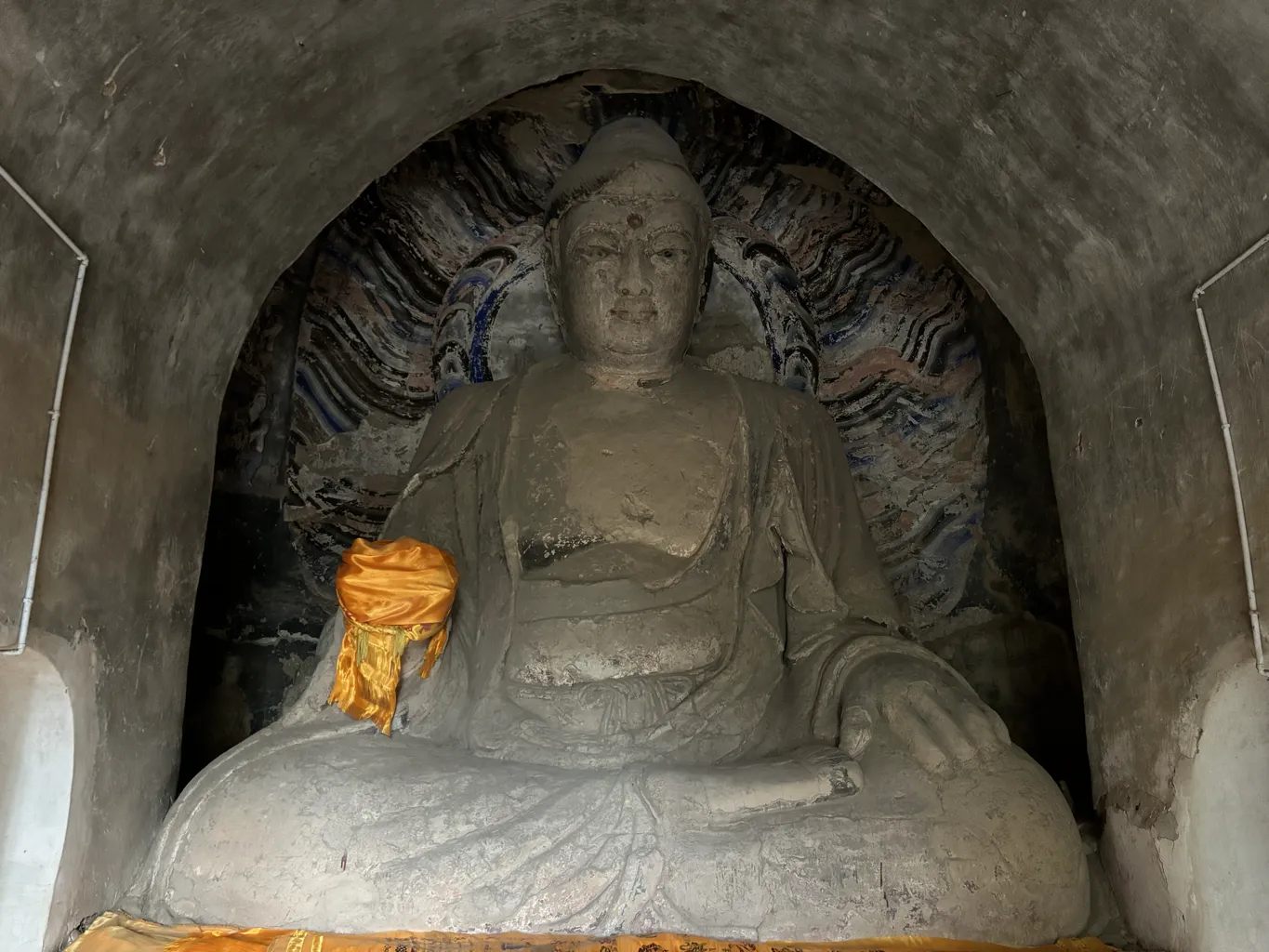
The Legacy of Bao Yi
A key figure in the creation of the Wangmu Palace Grottoes was Bao Yi, the governor of Jingzhou during the late Northern Wei Dynasty. Originally a powerful eunuch in the royal court, Bao Yi gained favor with Empress Dowager Feng, a devout Buddhist who oversaw the construction of the Yungang Grottoes. After her death, Bao Yi returned to his hometown of Jingzhou, where he oversaw the excavation of the Huazheng Temple Grottoes, which later became known as the Wangmu Palace Grottoes.
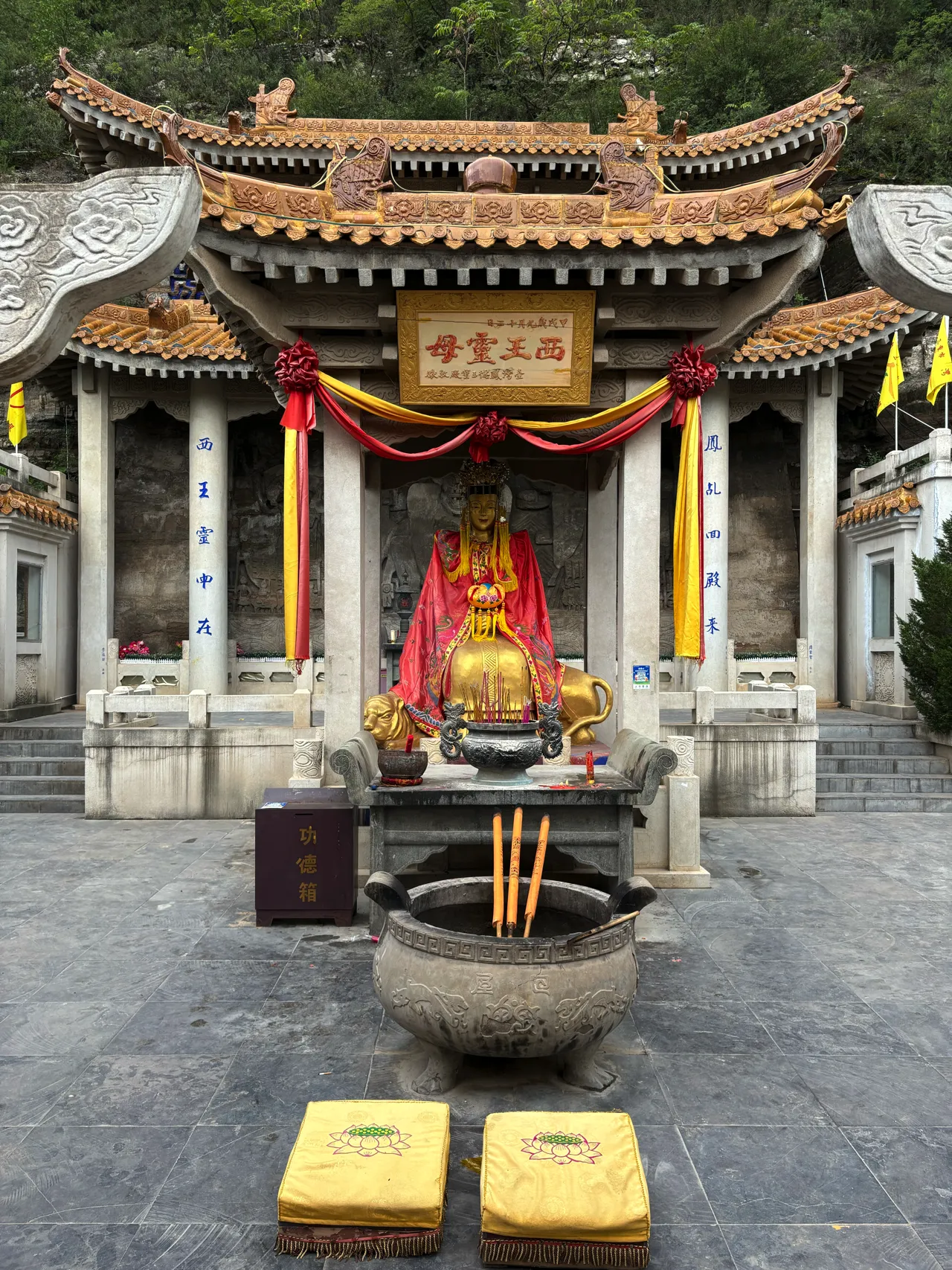
Bao Yi used his royal connections to bring skilled craftsmen from the Yungang Grottoes project to Jingchuan. These artisans created an “optimized and upgraded version” of the Yungang Grottoes, leaving behind a treasure trove of Buddhist art in the eastern Longnan region.
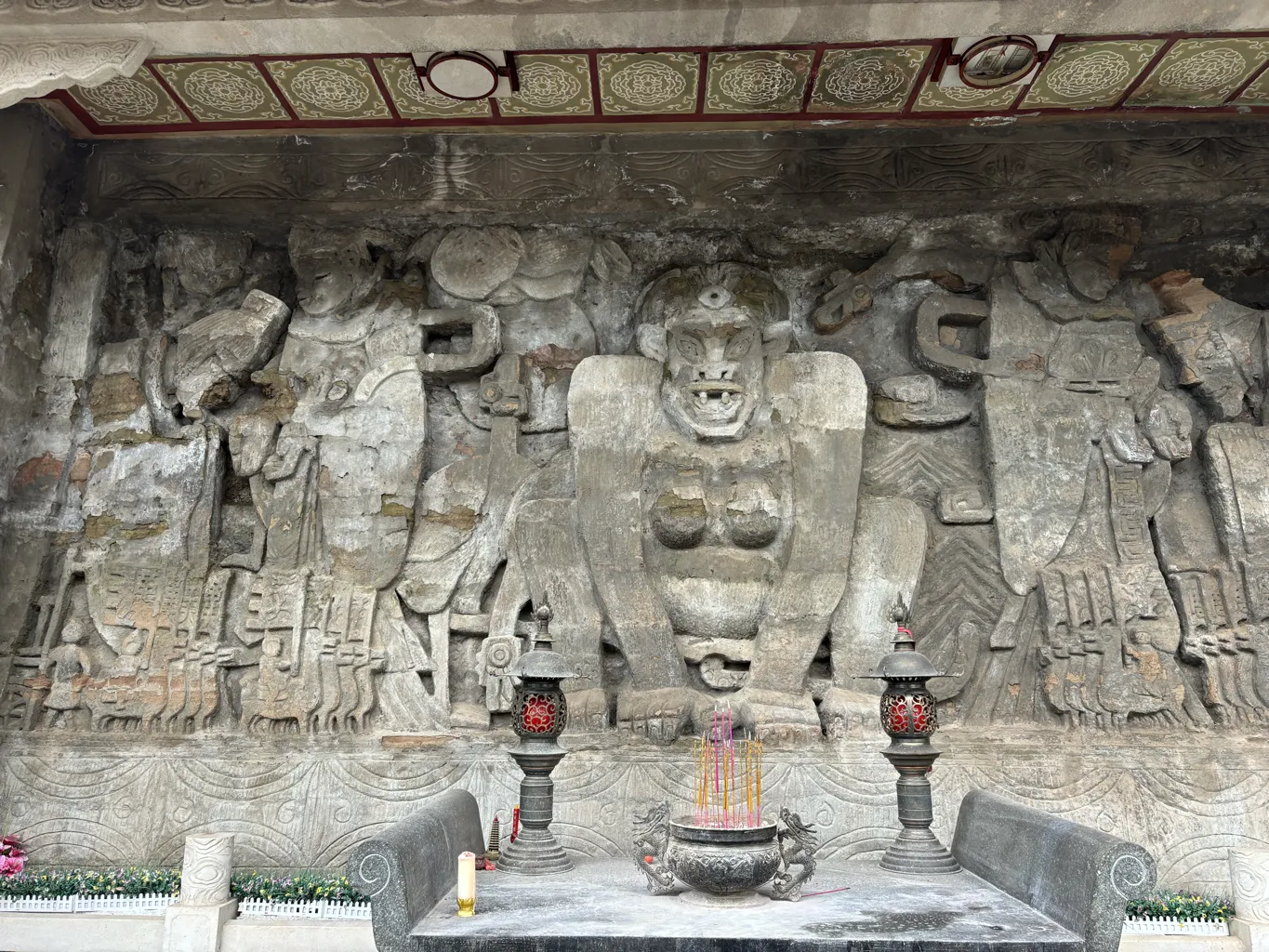
Conclusion
The Wangmu Palace Grottoes stand as a testament to the Northern Wei Dynasty’s deep devotion to Buddhism and their unparalleled skill in stone carving. From the majestic statues to the intricate architectural details, the grottoes offer a glimpse into the spiritual and artistic life of ancient China. As a national key cultural relic, the Wangmu Palace Grottoes continue to attract scholars and visitors alike, eager to explore the hidden treasures of Gansu’s Buddhist heritage.
Sources:

